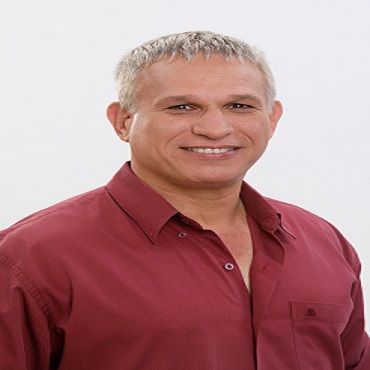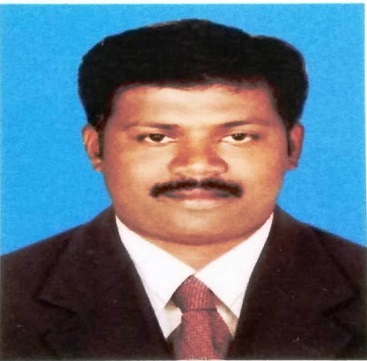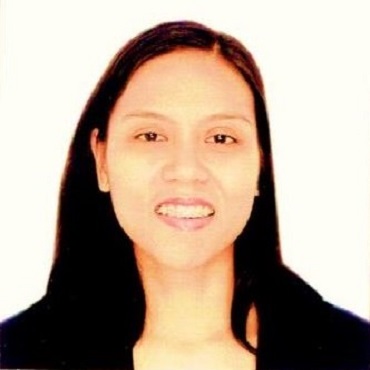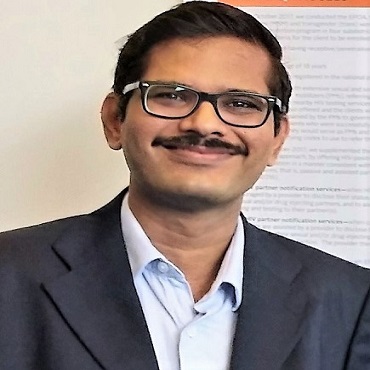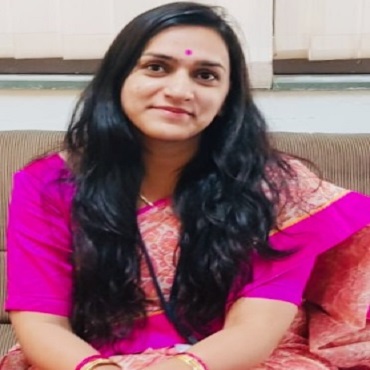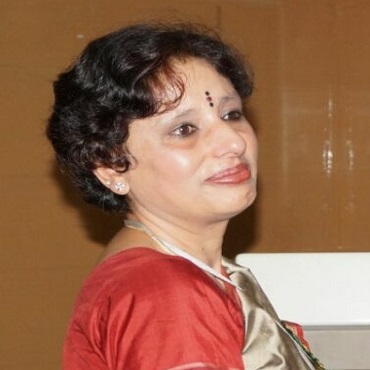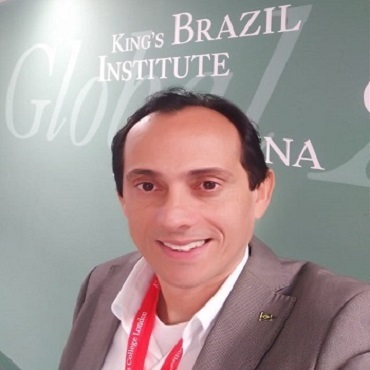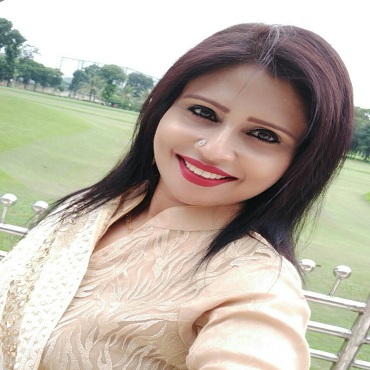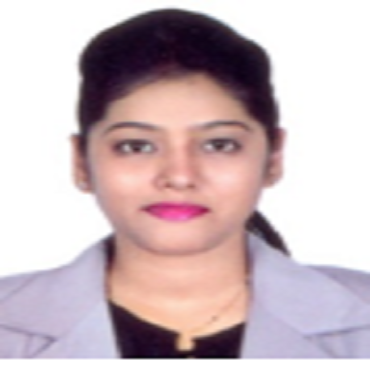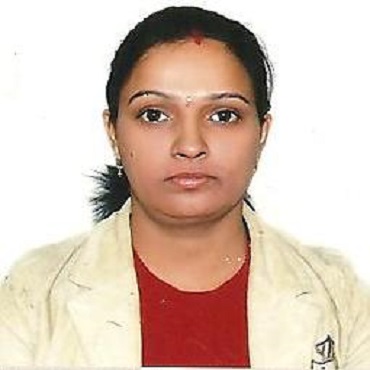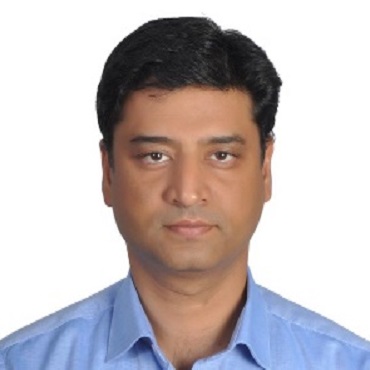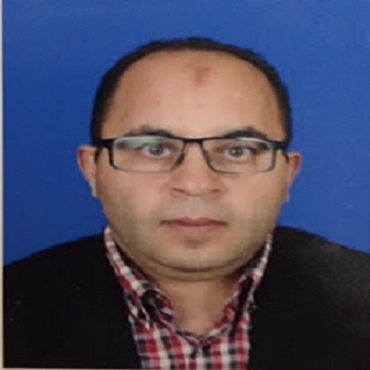Scientific Program
Keynote Session:
Title: Civil-Military Relations: Forensic Pathology Aspects
Biography:
Chen Kugel, MD, School of Medicine, Ben Gurion University, Israel. Trained in forensic medicine in Israel. Fellowships: Cape Town University, South Africa; Sheffield University, UK; Victorian Institute of Forensic Medicine, Melbourne Australia; Armed Forces Institute of Pathology, Washington DC, USA. Served for 21 years as Commander of the Medical Identification Unit, IDF Medical Corps and Advisor to the IDF Surgeon General for Forensic Medicine. Head of forensic medicine examination board of the Scientific Council of the Israel Medical Association. Coordinator of forensic medicine studies in Tel Aviv and Ben Gurion Universities. Currently Director of Israel National Center of Forensic Medicine.
Abstract:
In Israel, a special combination of relations between the army and the civilian population exists- most of the adult population is required to serve in the army for a few years and then reserve duty. Most of the population is having a first-degree relative who serves in the army at any given time, and military conflicts occur at any given moment. In addition, Israel has military control on a civilian population in disputed territories in the West Bank. This situation causes great friction and involvement of the army in civilian life.
In Israel there is only one forensic medicine institute that serves both the army and the civilian population. The unified civilian/military medical system can assist for example in identification of human remains since biometric data of those who serves in the army are kept in the IDF. On the other hand a biometric data reservoir is raising ethical and privacy dilemmas.
Veterans receive concessions in granting license to carry weapons. This has defensive implications in the event of a terrorist or other violent attacks, but also potential to increase excessive and illegal use of weapons.
The friction with Palestinian population creates disputes that each side attempts to exploit to advance its narrative. Forensic pathology is of great significance to reveal actual facts. For example, it is possible to clarify disputed points such as allegations of excessive shooting in order to kill (and not to incapacitate), arguments about shooting directions (shooting when the person was not a threat) and claims of the cause of death.
In this talk, I will try to review the main problems in forensic medicine that arises from the interface between the military and the civilian populations, while discussing specific cases.
Title: Synthesis of red emission europium (III) complex coated on D-dextrose hybrid materials for latent fingerprint detection with powder dusting method
Biography:
Dr. Prabakaran Eswaran is currently working as a Postdoctoral Research Fellow (PDRF) under the supervision of Prof. Kriveshini Pillay Associate Professor in the, Department of Chemical Sciences, Doornfontein Campus, University of Johannesburg, South Africa. His Ph.D was awarded from the University of Madras, India and the thesis mainly focused on electrochemical sensors. His PDRF research involves the synthesis and characterization of fluorescent carbon quantum dots materials for forensic applications, novel metal oxide nanostructures for photocatalytic and forensic applications, graphene (GO), graphitic carbon nitride (g-C3N4) based on nanocomposites for photocatalytic and forensic applications and Electrochemistry. The synthesized nanomaterials were characterized by instrumental methods such as UV-visible spectrum, FT-IR spectrum, Fluorescence spectrophotometer, X-ray diffraction, BET, Elemental analysis of XPS, TGA, SEM, TEM, TOC, ICP-OES and Cyclicvoltammetry. Dr. Prabakaran is in possession of two years teaching experience (June-2014 to May-2016) (GKM College of Engineering Technology, Chennai-63 in India and is the co-supervisor for three Ph.D. students. He published 9 research articles in international journals during his Ph.D and four research papers and one book chapter has been published to the journals during his PDRF.
Abstract:
A red emission europium (III) complex Na[Eu(phen)2.3H2O].4H2O has been synthesized using Eu(NO3)3.6H2O and 1,10-phenanthroline as precursors. This complex was mixed with D-Dextrose (D-dex) to prepare hybrid red emission fluorescent materials Na[Eu(phen)2.3H2O].4H2O/D-dex. The pure Na[Eu(phen)2.3H2O].4H2O complex and Na[Eu(phen)2.3H2O].4H2O/D-dex hybrid complex were characterized using different instrumental methods such as Fourier transform infrared spectroscopy (FTIR), X-ray diffraction (XRD), UV-visible spectroscopy, Fluorescent spectroscopy, Thermogravimetry-differential thermal analysis (TG-DTA), Scanning electron microscope (SEM) and Transmission electron microscopy (TEM) and Brunnauer Emmett Teller (BET) (for surface area measurements). The pure Na[Eu(phen)2.3H2O].4H2O complex and Na[Eu(phen)2.3H2O].4H2O/D-dex complex were tested for latent fingerprint detection (LFP) under UV light irradiation and under day light conditions. The hybrid complex of Na[Eu(phen)2.3H2O].4H2O/D-dex complex provided more visible and clearer fingerprint images and ridge details under the UV light irradiation when compared to visible light irradiation. The LFP image was not clearly explored by using hybrid Na[Eu(phen)2.3H2O].4H2O/D-dex complex under visible light irradiation due to the spreading of the fingerprint residue on the whole surface area. This hybrid Na[Eu(phen)2.3H2O].4H2O complex was also tested for LFP detection on both porous and non-porous materials under UV light (365 nm) and visible light irradiation. In all cases, the hybrid Na[Eu(phen)2.3H2O].4H2O/D-dex complex fluorescence powder enhanced LFP detection when compared to the LFP images of the pure Na[Eu(phen)2.3H2O].4H2O complex under UV light irradiation (365 nm) images. The Na[Eu(phen)2.3H2O].4H2O/D-dex complex powder is therefore a good labeling agent and results in better fluorescent activity for LFP detection for the identification of criminals in forensic investigations.
Oral Session 1:
- HIV/AIDS and Retroviral Diseases | HIV Related Infections, Co-infections & Cancers | HIV Diagnosis and Therapy
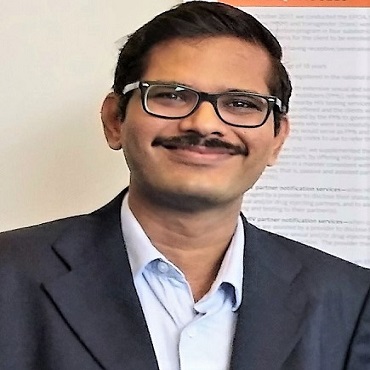
Chair
Mugundu Ramien Parthasarathy
FHI 360, India
Title: Stigma and level of care among health care providers to patients with human immunodeficiency virus-acquired immunodeficiency syndrome
Biography:
Felisse Julien F. Jegonia completed her doctor of medicine in Jose P. Rizal School of Medicine, Xavier University-Ateneo de Cagayan at the age of 28 years old and immediately proceeded to specialty training in internal medicine in Maria Reyna-Xavier University Hospital Inc. She is currently an affiliate consultant in Maria Reyna-Xavier University Hospital Inc and a physician in JR bOrja General Hospital, Cagayan de Oro City. Her research paper has been accepted for presentation in STI/HIV Congress 2019 in Vancouver, Canada, United States conference on AIDS 2019 and Scolarena Conferences 2019 (SCON) in Las Vegas, USA.
Abstract:
Title: Costing the Enhanced Peer Outreach Approach (EPOA) in Krishna district, India to inform integration of EPOA into the national program
Biography:
Abstract:
Title: Barriers in reporting sexual assault cases
Biography:
Priyanka Singh, Ph.D. in Forensic Science and visiting faculty member in Amity Institute of Forensic Science at Amity University. She is recipient of Senior Research Fellowship from Bureau of Police Research and Development, Ministry of home Affairs, Government of India. Her doctoral research focusses on role of Police and victims of sexual assault. Dr. Priyanka has 7 years of research experience in the field of criminology and forensic Science. She also serves as visiting faculty and encompasses multidisciplinary approach in the fields of toxicology, serology and forensic psychology. She holds a master degree in forensic science and a graduate in Biotechnology.
Abstract:
Reporting of sexual assault cases on time is one of the major step which helps in proper investigation of the case. The proportion of fair investigation varies in the cases of child and adult abuse. This study demonstrates some dominating factors which create obstruction in reporting such cases like judicial proceedings, psychological factors, societal acceptance and severity of the case. It has been concluded that delayed reporting is associated with less number of valuable evidences, unavailable witnesses that leads to late judicial proceedings , social status and the degree of physical and mental illness.
Title: Alleged medical errors reporting of autopsied cases as a quality improvement tool
Biography:
Bikash Sah, Doctor of Medicine (MD) in Forensic Medicine and Toxicology.One year Fellowship in Forensic Odontology,Associate Professor at Department of Forensic Medicine and Toxicology,Assistant Hospital Director, B. P. Koirala Institute of Health Sciences, Dharan, Nepal. Member of The International Association of Forensic Toxicology (TIAFT). Nepal Medical Association. Indian Association of Forensic Odontology. Medicolegal Society of Nepal. Won First Prize in Oral Presentation at 2018 conference organized by Indian Association of Medicolegal Experts.
Abstract:
Cases brought for autopsy with an allegation of death due to the medical negligence are being reported. First case was filed on a doctor with an allegation of death because of not realizing about ectopic pregnancy in this case of post abortion care but the doctor was saved when histopathological examination could not establish a product of conception. Second case was with an allegation that the case could have been saved if her blood, urine and vomitus would have been sent to the lab for specific poison determination followed by specific treatment. Third case has shown the importance of informed consent. Fourth case was with an allegation: "How can a man just with abdominal pain die with endoscopic examination and why were they not informed prior to the procedure about its lethal complication".
Title: Forensic DNA fingerprinting and sex mismatch : Chimerism based on Y-STR DNA determination analysis
Biography:
Abstract:
DNA analysis identifies an individual as well as different species also . Forensic DNA is a branch of forensic science that focuses on the use of genetic material to answer questions pertaining to legal situations, including both criminal and civil. It is a technique comparing criminal suspects' profiles to DNA evidence so as to assess the likelihood of their involvement in the crime. Thus DNA Fingerprinting analysis aids in the personal identification for forensic purposes and has always been a driving motivation for law enforcement agencies in almost all countries since its inception. The introduction of DNA markers (Y-STR) has allowed for greater precision and higher discriminatory power in forensic testing. A criminal/ person committing crime after Bone Marrow Transplantation are a rare situation but not impossible one. Keeping such situation in mind, a study was carried out to find out the best biological sample to be used for personal identification especially in forensic situation. We choose female patient (recipient ) and a male donor. The pre transplant sample (blood) and post transplant samples (blood, buccal swab, hair roots) were collected from the recipient (patient). The same were compared with the blood sample of the donor using DNA FP technique. Post transplant samples were collected at different interval of time (15, 30, 60 and 90 days). The study was carried out using Y-STR kit at 23 loci. The results determined discusses the phenomenon of chimerism and its impact on Y-STR . Hair sample was found the moist suitable sample which had no donor DNA profiling upto 90 days.
Title: Forensic intelligence and its application
Biography:
Abstract:
The forensic activities have evolved over time, many strategies, plans, and frameworks have been proposed in order to mitigate the complexity of forensic work and absence of resources to effectively well develop the crime combat and criminal persecution which reflects the constantly changing landscape within which forensic sciences operate. The forensic intelligence is still relatively new in the field of forensic science and the advances in Criminalistics requires innovative techniques, methods, and strategies to combat local, regional, national, international crimes. This article provides an in-depth case study at Brazilian Federal Police in order to help academics, forensic scientists, forensic experts, police officers, managers, and policymakers to establish a holistic understanding and a realistic discussion that advances the frontiers of the forensic science.
Title: Analysis of human DNA in dental calculus for identification and gender estimation
Biography:
Udita Singh, MDS (Oral medicine and Radiology) Certified Forensic odontologist (Indian Association of Forensic Odontology),PhD scholar at Pacific College of Dental Science, Udaipur, Rajasthan.Working as Associate Professor in Department Of Oral Medicine and Radiology, Kothiwal Dental College and Research Centre, Moradabad, Uttar Pradesh, India.
Abstract:
Title: A retrospective study of alleged rape victims at forensic medicine department of Dhaka Medical College, Bangladesh
Biography:
Rifat Naoreen Islam has completed her Diploma in Forensic Medicine from Dhaka Medical College, University of Dhaka, Bangladesh, on the Year of 2007. She joined as Assistant Professor on 2008 in Medical College for Women & Hospital (WMC), from 2013 she was working as Associate Professor in same Institution. She complete her Member of the college of physicians and surgeons (MCPS) on 2019 in supervision of Bangladesh College of physician and surgeon (BCPS). She has already published 5 Journal.
Abstract:
Background: Sexual assault against woman is one of the most common crime in Bangladesh. Objective: The purpose of the present study was to find out the medicolegal findings of rape victims and to analyze the data with respect to socio-demographic characteristics, relationship between accused and victim, medicolegal examination and evaluate the role of forensic examination in dealing with sexual assault cases.
Methodology: This was a retrospective study which was done in the department of Forensic Medicine, Dhaka Medical College, Dhaka, Bangladesh, from 1st January 2018 to 31st December 2018 with maintaining ethical issues. The data was retrieved from police forwarding letter; history revealed by the victim during examination, medicolegal certificates and results of forensic laboratory examination of the exhibits.
Results: We carried out a retrospective study of 404 alleged rape victims during the year of 2018. We found that 51.9% cases were sexually abused although high vaginal swab for spermatozoa was found to be negative in all cases. In this study, majority (47%) of the victims were with 14-17 years of age and 59% of the victims were unmarried. 43.3% of the victims were students & 44.5% were known to the victims.
Conclusion: In majority of the cases, there were no evidence of forceful sexual intercourse at the time of medical examination due to long post coital interval. Delay in medical examination resulted in loss of vital trace evidence. That’s why – “The allegation of rape is easy to make, hard to prove and harder to disprove.
Title: Virtobot: The convincing role of artificial intelligence in the crime investigation
Biography:
Heena Goswami, working as Assistant Professor of Science and Technology in one of the top three National Law Schools of India. She has served as a Forensic Expert in the State Forensic Science Laboratory and has investigated and opined for more than 200 cases like homicide, hanging, suicide, poisoning, motor vehicle accidents, robbery, burglary, and forgery etc. as the Expert Witness. She has conducted and organized various training programs on Investigation and Trials for Practitioners, Professionals, Academicians and the Students. She has published various articles of national and international repute. She has developed interdisciplinary approaches in various subjects combining the components of Science and Law Enforcement.
Abstract:
The advances in scientific technology in the recent past have taken the modern world by the tempest. AI has been introduced to describe the emergence of an interconnected world that expands beyond the purely digital domain to interact with the physical and biological ones. The manuscript focuses on Virtobot, an AI which is a product of interdisciplinary sciences that is believed to be the future of forensic sciences and criminal investigation. Virtobot uses a technology called virtopsy which is based on imaging techniques and forensic medicine and is touted for its non-invasive autopsy procedure. Studies show that the level of accuracy of Virtobot’s imaging technique can help detect peculiarities and injuries that may go unnoticed in traditional autopsies. For the first time ever, a forensic examination of a living person seems possible through Virtobot which has a stronger imaging capability than a CT scan or an MRI.
Title: The Evolution of SNP Genotyping for Forensic Investigations
Biography:
Steven Armentrout pioneered the use of SNP genotyping for forensic investigations. Beginning in 2011, with funding from the US Department of Defense, he led the research team that created Parabon® Snapshot®, the world’s first software application able to predict physical appearance and ancestry of an unknown person from a crime scene DNA sample, making it available to law enforcement in 2015. Dr. Armentrout holds a PhD in Computer Science from the University of Maryland, College Park and has nearly 30 years of experience designing machine learning (A.I.) software to solve complex problems ranging from investment portfolio optimization to nanotechnology design and bioinformatics.
Abstract:
Less than a decade ago, the idea of using single nucleotide polymorphisms (SNPs) for forensic investigation was a foreign concept. Beginning with studies showing the association between specific genes and visible traits, researchers have since found new ways to exploit the full richness of the human genome. From a case study perspective, participants will gain an understanding of how SNPs (for DNA phenotyping, ancestry determination, kinship inference and genetic genealogy) are now being used to solve cases at an unprecedented rate. In the past year alone law enforcement agencies, both in the US and abroad, who have utilized these technologies, have been able to solve over 70 violent crimes, most of which had been cold for over 25 years.
Title: Tooth, the best forensic evidence for forensic identification and age estimation: A case report
Biography:
Leena Bhardwaj has diversified academic background. She has started with the field of dental sciences and explored it with the forensic perspective. She is specialized in Forensic Odontology, keeping her root with dentistry and linking it with forensic science at post graduate level and furthermore she is perusing PhD under supervision of Dr T.D Dogra, Ex- Director, AIIMS and Director IQAC, SGT University and Dr Anupuma Raina, Scientist, Forensic Medicine and Toxicology, AIIMS. Recently she is serving as a Assistant Professor in the department of Forensic Sciences at the SGT University Medical College & Research Centre, Gurugram.
Abstract:
Title: The complete iOS forensic workflow: From physical extraction to iCloud
Biography:
Alexander Talipov is Project Manager at ElcomSoft Co. Ltd., the company developing digital forensics tools. Alexander has done a number of talks and workshops on mobile and desktop forensics for Elcomsoft clients in Russia, Europe and Asia. He speaks regularly at forensic events and conferences all over the world.
Abstract:
Accessing evidence stored in iOS devices (iPhones and iPads) is a challenge. Full-disk encryption stands in the way of low-level acquisition, while the many hardware and system level restrictions make physical extraction extremely difficult. At the same time, the iPhone must remain usable and accessible to the owner, which means a forensic specialist may still be able to get around iOS security measures.
iOS devices feature several layers of protection, which makes seizing, storing and transporting iOS devices a challenge requiring expertise. Latest version of Apple’s mobile operating system actively resist forensic efforts by disabling the less secure biometric identification (Touch ID or Face ID) and blocking USB connectivity after a short period of time. Many of these restrictions can be effectively bypassed with proper timing and the right technique.
In this talk, we'll cover the entire iOS forensic workflow. We'll start from seizing, transporting and storing the device, and discuss approaches, methods and tools to access information and extract evidence. We’ll address USB restricted mode, talk about using existing pairing records to extract locked devices, and discuss physical acquisition via jailbreaking. We’ll look at the types of data Apple devices store and sync via iCloud, and learn how to extract that data. Finally, we will talk about extracting stored passwords from local and iCloud keychain. Logical, physical and cloud acquisition methods will be covered.
Title: Assessment of psychological traits of victims of drug of abuse: Conglomeration of psychology and forensic science
Biography:
Neha Tomar, is an research associate, Amity Institute of Forensic Sciences at Amity University, India. She has complete her graduation in: B.Sc(Bioinformatics, Biotech, Biochem, Biophy)-2007, from Allahabad University. She has completed Post Graduation in: M.Sc(Forensic Science)-2009, from Amity University, India. She has published more than 10 papers in reputed journals.Dr. Neha Tomar is Ph.D. in Forensic Science and faculty member in Amity Institute of Forensic Science at Amity University. Her doctoral research incorporates forensic toxicological studies of drugs in India. She has 10 years of teaching and research experience. She encompasses multidisciplinary approach that encompasses fields of toxicology, forensic psychology, criminology and forensic anthropology. She has served as lecturer in Department of Forensic Medicine in Nepalgunj medical college and College of Medical sciences, Nepal. She holds a master degree in forensic science and graduate in applied sciences from Allahabad University
Abstract:
The present study deals with the assessment of various psychological traits of drug victims. A 16 personality factor questionnaire was used to evaluate personality traits of addicts of drugs like nicotine, cocaine, cannabis. Output recorded was converted from raw score to sten score. Graph was plotted to show the personality traits. The personality graph obtained as a result showed majority of them to be reserved, undisciplined, less intelligent and strongly affected by feelings which reveals a strong connection between drugs and crime.
Title: Forensic microanthropology: A new specialty in the forensic sciences
Biography:
Carlos A. Gutierrez, is Ph.D. Student. He has his Master of Science in Forensic Sciences in Chaminade University of Honolulu, USA and his Master in Educational Management in Chile. He is retired Capitan of the Chilean National Police after 18 years of service. He is Lecturer of Forensic Sciences of Chaminade University of Honolulu, and Co-founder of True Forensic Science. He is expert in Crime Scene Investigation and developed the Forensic Microanthropology. He worked in more than 6,000 forensic cases in his career.
Abstract:
This study is focused on reviewing and developing standards and guidelines in Forensic Microanthropology related to identification and microscopic differentiation between human and non-human bones. This study developed a protocol, which describes the basic tools and equipment necessary to achieve this type of analysis. Also describes the preparation process of the evidence to be analyzed under the microscope, as well as the microscopic identification methods (e.g. qualitative and quantitative approaches). This study was developed in Chaminade University of Honolulu, USA. To validate this study, the samples were analyzed one more time in the Laboratories of The Department of Defense of the United States POW/MIA Accounting Agency’s DPPA-CIL Hawai’i, USA. The original goal for this study was to show the importance of Forensic Microanthropology for the understanding of microscopic differences between human and non-human bones. Forensic Microanthropology is a new forensic science field, easy to learn and inexpensive, which can be of use in human identification processes in every forensic laboratory around the world. Since 2017, students of Forensic Science at Chaminade University of Honolulu have been learning Forensic Microanthropology and they have shown 100% positive identification and differentiation of human and nonhuman bone after their training.
Title: Forensic microanthropology: A new specialty in the forensic sciences
Biography:
Rajeev Sharma has received his post-graduation in Forensic Medicine and Toxicology from Lady Harding Medical College, Delhi and also obtained degree in Law from Delhi University, India. His role has been instrumental in many high profile Forensic Cases. He has undertaken several thousand autopsies and received extensive training abroad in managing wide range of Forensic cases related to natural, unnatural deaths and other medico-legal scenarios. He has been a teaching faculty to both undergraduate and postgraduate medical students and has published numerous papers and articles in the national and international journals of repute. He has served as teaching faculty in both Government and private Medical colleges of India and of late has been working as Senior Forensic Physician with Ministry of Interior, state of Qatar.
Abstract:
In the world vast majority of cases of deaths due to electrocution are accidental. Suicidal electrocution and that too by high voltage is one of the rarest methods adopted for the purpose. We report the case of a 36-year-old male who committed suicide by climbing up a 10-meter-tall electric tower carrying live cables of high voltage of 40,000 volts. He was found lying dead on the ground with multiple burns all over the body, and with multiple blunt injuries. Examination and Autopsy revealed multiple burns with charred, thickened skin, singed hairs and underneath coagulation of tissues and muscles over various areas of the body. Underlying adipose tissue was melt and oily liquid was seen. Signs of trauma as multiple lacerated wounds and fractures of skull, face, ribs and right upper limb were seen but they did not contribute to the cause of death. Histopathology from skin tissues over multiple burnt sites confirmed the loss of epidermis, with collagen in epidermal and subepithilial layers with elongation of nuclei “stream of nuclei”. Features were consistent with changes induced by electrical burns. These atypical findings on the body can be explained by the proximity to electric arc produced by high voltage current and the electromagnetic field generated by it. Police investigations showed that the deceased was under severe depression because of his personal problems. The method adopted and the findings make this case a rare scientific report.
Title: High voltage suicidal electrocution
Biography:
Anis Benkhalifa has received his post-graduation in Forensic Medicine from both Tunisian Ministry of Public Health and Monastir University - Tunisia and also obtained degree of Clinical Toxicology from Louis Pasteur University of Strasbourg, France. His role has been forensic practitioner in many high profile cases and has undertaken several thousands of different kinds of autopsies in different Governmental Hospitals in Tunisia and of late has been working as Consultant Forensic Medical with Ministry of Interior of State of Qatar .He has been a teaching faculty to high schools of Police to both undergraduate and postgraduate medical students and officers of Police. He has published numerous papers and articles in the National and International Journals of repute.
Abstract:
In the world vast majority of cases of deaths due to electrocution are accidental. Suicidal electrocution and that too by high voltage is one of the rarest methods adopted for the purpose. We report the case of a 36-year-old male who committed suicide by climbing up a 10-meter-tall electric tower carrying live cables of high voltage of 40,000 volts. He was found lying dead on the ground with multiple burns all over the body, and with multiple blunt injuries. Examination and Autopsy revealed multiple burns with charred, thickened skin, singed hairs and underneath coagulation of tissues and muscles over various areas of the body. Underlying adipose tissue was melt and oily liquid was seen. Signs of trauma as multiple lacerated wounds and fractures of skull, face, ribs and right upper limb were seen but they did not contribute to the cause of death. Histopathology from skin tissues over multiple burnt sites confirmed the loss of epidermis, with collagen in epidermal and subepithilial layers with elongation of nuclei “stream of nuclei”. Features were consistent with changes induced by electrical burns. These atypical findings on the body can be explained by the proximity to electric arc produced by high voltage current and the electromagnetic field generated by it. Police investigations showed that the deceased was under severe depression because of his personal problems. The method adopted and the findings make this case a rare scientific report.
Title: Evaluation of 7 age-related CpGs for forensic purpose in blood from Chinese Han population
Biography:
Pan Chao is a doctoral candidate from Huazhong University of Science and Technology
Abstract:
Age prediction is an important part of forensic fields, age-related CpG sites have been regarded as the most promising biomarker in this fields. Latest developments have shown that the methylation levels of DNA molecular genetic markers is linearly related to the chronological age. In this study, we developed a SNaPshot multiplex assay to measure DNA methylation simultaneously at the 7 CpGs (cg02228185 in ASPA gene, cg09809672 in EDARADD gene, cg19283806 in CCDC102B gene, cg04208403 in ZNF423 gene, chr17: 44390358 of GRCh38 in ITGA2B gene, cg14361627 in KLF14 gene and cg06639320 in FHL2 gene), then we investigated DNA methylation changes and assessed their relevance to age based on different gender at these CpGs in 230 samples collected from 140 males and 90 females aged from 0 to 86 years, cg19283806 in the CCDC102B gene demonstrated strong correlation between DNA methylation and age in all gender sample types. We built age prediction models separately for each gender type using the DNA methylation values at the 7 CpGs by stepwise linear regression. The training sample model including 6 CpGs explained 85.12 % of variation in 230 individuals. The developed model was validated in an independent testing set of 80 blood samples. In training set and testing set, compare with the other age group, the number of correct predictions ±5 years both acquired the highest level of 73.2% and 74.1% in the aged 20–40 years old. The age prediction models in our study would be reliable and effective in forensic age prediction.

